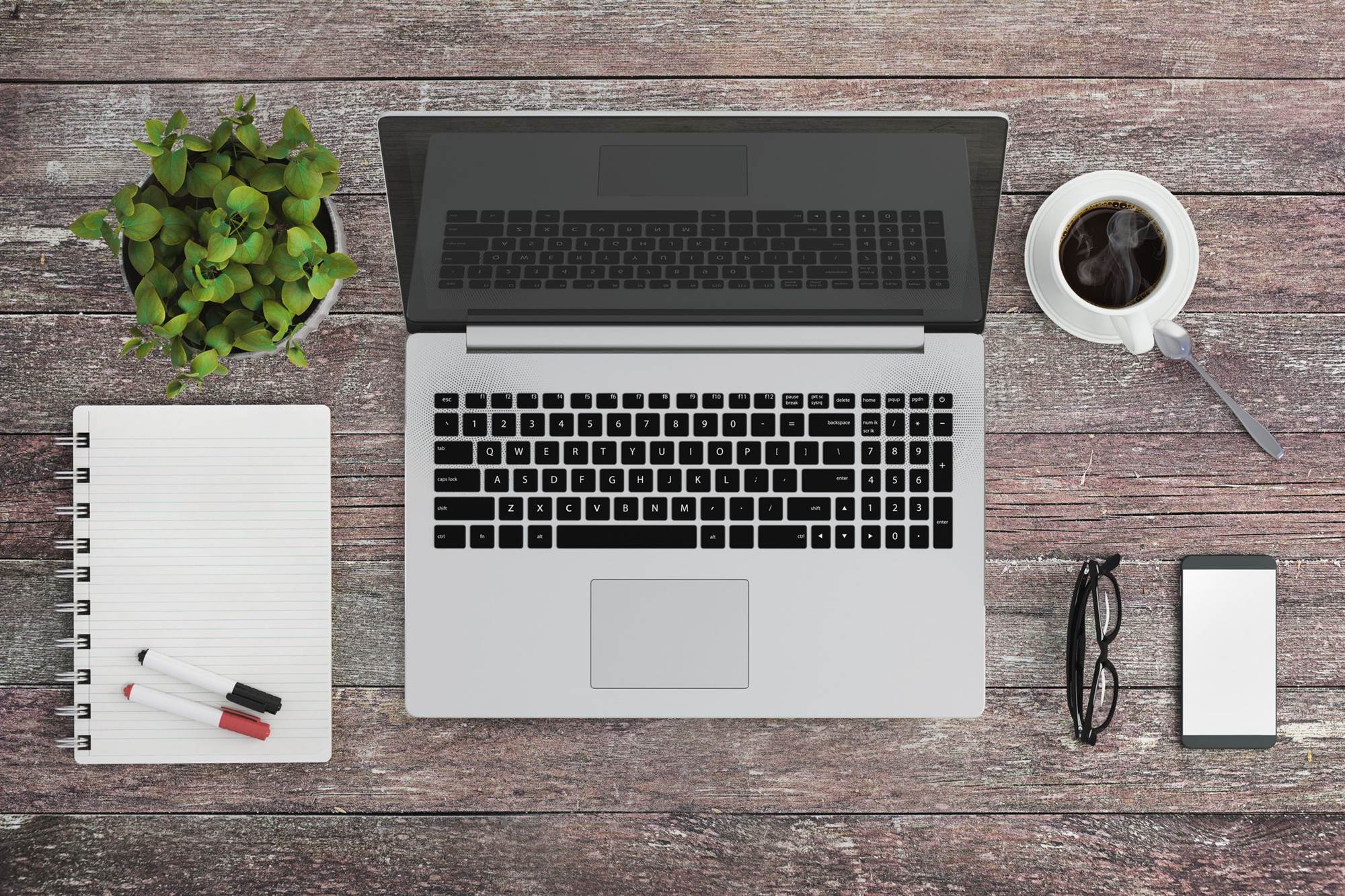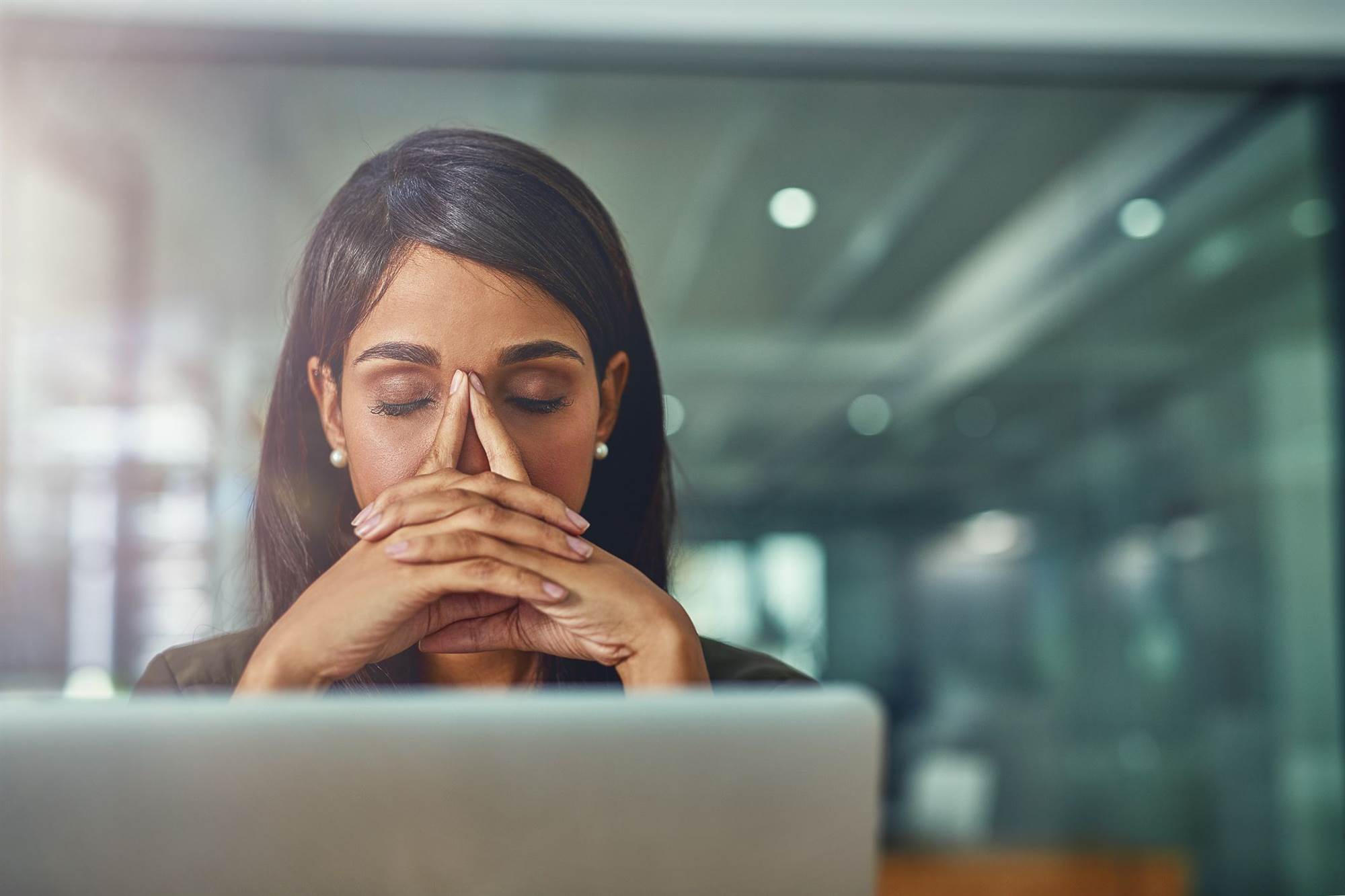There’s a solid chance you’ve tweaked your back before - after all, it's estimated 70-90% of Australians experience some kind of back pain at one point or another in their lives. Usually, it happens in the lower back, rather than the upper back. There’s a reason for that: “The rib cage offers a lot of support and stabilises the spine in the upper back,” says orthopaedic spine surgeon Dr Jeffrey Goldstein. “You don’t have similar support in the neck or lower back.” But just because these parts of the spine are more prone to feeling pain, that doesn’t mean the upper spine (also called the thoracic spine) is in the clear. Here are all the ways upper back pain can creep into your life.






©Getty Images
1) Your desk
Doesn’t matter whether you do manual labour or park your butt in a desk chair: Back pain is the leading cause of work loss days in Australia. Bad posture and overloading the back with more weight than it can handle are the main culprits behind this back pain, and it’s because you shouldn’t only be building strength in your lower back but your upper back and shoulders, too, Dr Goldstein says. “If the muscles in your upper back are weak, you won’t be able to support your shoulders, your head, and your neck as well,” he says, and that’s why so many people slouch when they sit.
The fix: Work at a computer? Make sure your screen is at eye level so that you don’t have to bend forward to see it. If your job requires heavy lifting, try to avoid bending at only the hips since that will force your back to bear the majority of the weight. Instead, bend at the knees and use your legs to help lift, says Dr Miho Tanaka.
©Getty Images
2) Your workout
Those cycle classes won’t do you much good if you’re not strength training, too. And that means focusing on your entire body - not just the moves that’ll earn you a flat belly or toned tush. “There are plenty of muscles that we can’t see - supportive muscles that maintain our posture in our neck, back, and extremities,” Dr Tanaka says. When those muscles aren’t given the same attention as the others, it can lead to imbalances, which force the stronger ones to compensate for the weaker ones, thus leading to pain.
The fix: Try these Pilates exercises for back pain prevention. They work your muscles from head to toe, building a strong overall foundation that may reduce your pain risk. Dr Goldstein also recommends stretching before every workout; these stretches for back pain are a great place to start.
©Getty Images
3) Your bag
Yes, your bag is designed to be carried over one shoulder. That doesn’t mean it’s good for your body. “Those things put stress on the upper back, your shoulders, and your neck,” Dr Goldstein says. Just picture how carrying a bag on one side of your body will contort the spine to one side.
The fix: On days you’ve got to carry lots of stuff, Dr Goldstein suggests wearing a backpack instead. That way, weight will be distributed evenly across both shoulders. If you carry a purse, or a shoulder bag, he says it’s best to keep the weight of it below 20 percent of your own bodyweight.
©Getty Images
4) Your smoking habit
“Smoking pretty much has a detrimental effect on anything that can go wrong with the body, mostly because when you smoke, you have decreased oxygen going to your muscles, to your joints, and to your skin - pretty much everything,” Dr Tanaka says. “And that causes you to be less likely to heal, more likely to have problems with having healthy muscles, and more likely to have degenerative problems. Pretty much anything that could be an issue is a bigger problem for smokers.”
The fix: Quit smoking. What are you even waiting for?
©Getty Images
5) Your stress levels
Have you ever noticed how your muscles tense up when you’re stressing about something? Well, there’s a reason for that: Stress is considered part of the inherent “fight or flight” response that all humans have. If you’re stressed out, your body perceives those feelings as a response to some sort of threat, and that might trigger pain as a protective mechanism, says orthopaedic physiotherapist Zachary Rethorn.
The fix: Be aware of the silent signals you’re too stressed, and take steps to bring some chill to your life. These natural remedies for anxiety may help.
©Getty Images
6) 3 upper back pain causes that are out of your control
Many upper back pain causes have easy fixes, but not all do:
Osteoarthritis and herniated disc: The discs between each of our vertebrae cushion the bones and prevent them from rubbing together. “As we age, these discs kind of wear down, just like everything else does,” Dr Tanaka says. This degeneration is called osteoarthritis - it’s the most common form of arthritis worldwide - and it can lead to upper spine pain when it pinches and irritates nearby nerves. Similarly, these discs can occasionally slip out from between the vertebrae, or even rupture. These are called herniated disks, and they can also cause pinched nerves.
Compression fractures or osteoporosis: With age comes a higher risk of osteoporosis. This disease causes the bones to become weak and brittle, and makes them more prone to fracturing. Sometimes, back pain is the first sign of osteoporosis, Dr Goldstein says. “People will get fractures and don’t even know it,” he says. It’s these fractures that lead to the slouched posture many people adopt as they age.
Gallbladder disease: The gallbladder is a pear-shaped organ under the liver that releases bile into the small intestines, where it helps the body digest fat. Sometimes, the bile can collect in the ducts leading to the small intestine. As this happens, it hardens up into what are called gallstones, and these can cause pain in the upper spine, right between the shoulder blades. “Sometimes people will come into the ER saying they have terrible back pain...but it’s not actually coming from your back,” Dr Tanaka says. This pain is actually called referred pain, and it’s basically a glitch among the nerves that are along the same pathway up to the brain.







.png&h=193&w=250&c=1&s=1)
.png&h=193&w=250&c=1&s=1)
